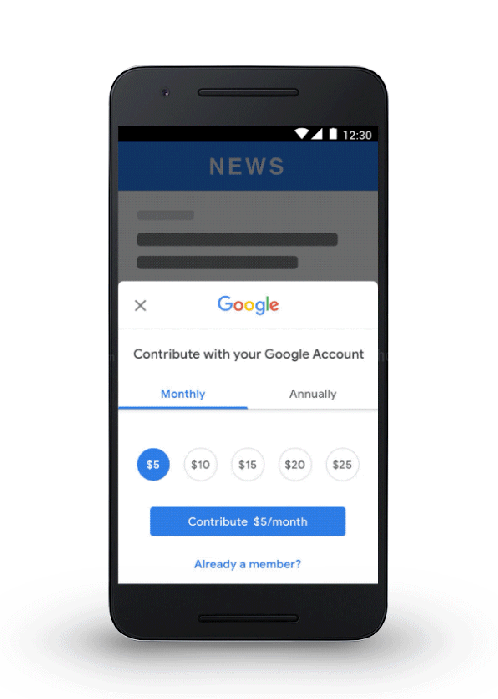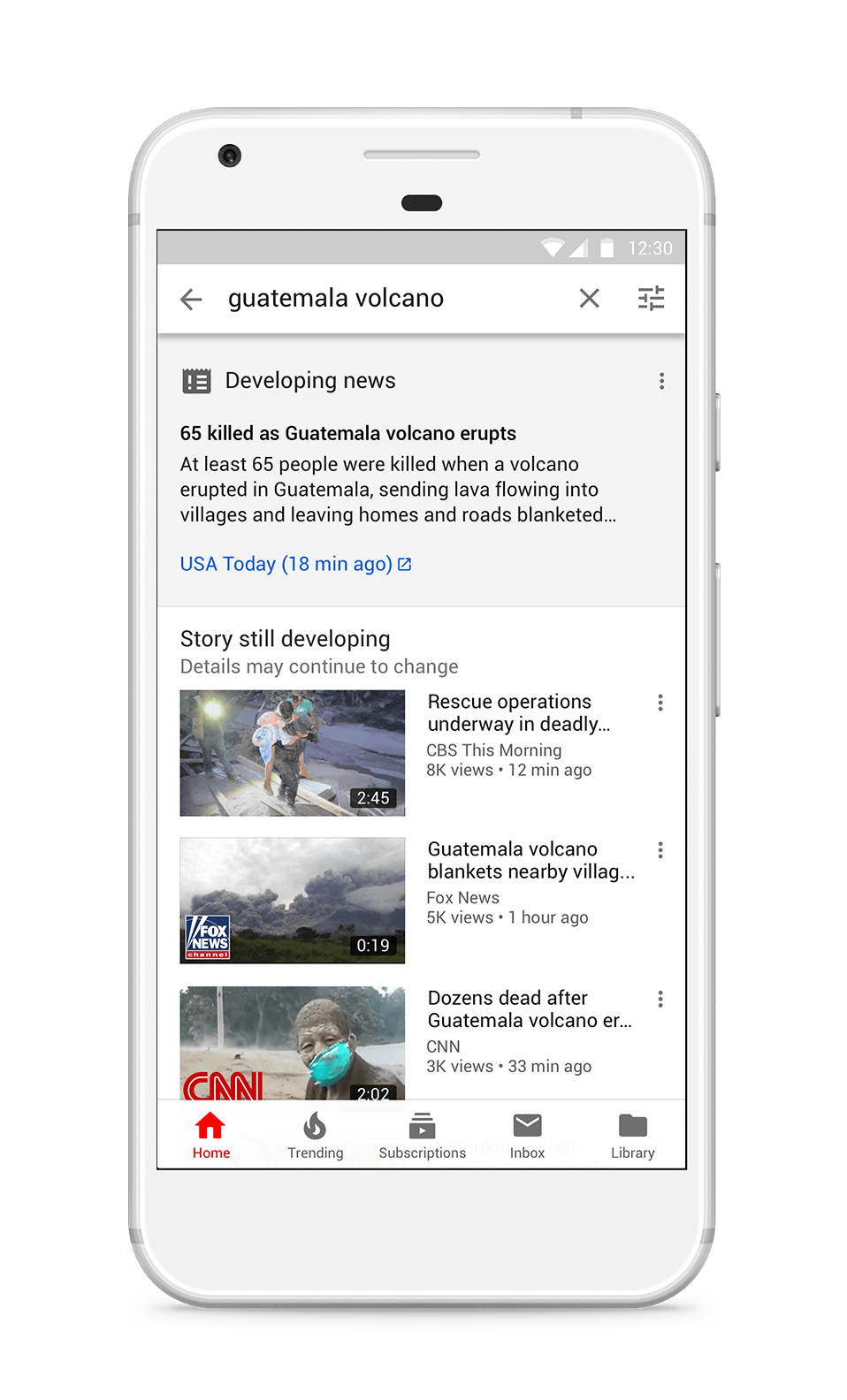Google launched the Google News Initiative in 2018 to help the news industry evolve better business models, increasing the quality of journalism, fighting misinformation, and driving tech innovation in newsrooms. Google even earmarked $300 million for the program. One year after its launch, Google has provided updates on its progress and new developments.
Pivot to Subscriptions
One of the first initiatives launched under the program was Subscribe with Google, which enabled to publishers to collect subscription fees from its users, who could subscribe using their Google Account, across devices. A year later, 50 publishers including The Washington Post and The Financial Times, have begun integrating the product with their operations. Google is also testing how they can work with publishers on a contribution or membership-based models. For this, Google is working with The Guardian, who has managed to turn memberships into a bigger source of revenue than advertising. So far, Subscribe with Google has received mixed reviews, mainly because of the heavy work requires to integrate it into their products.

Google is also starting a Subscription Lab to make its subscription system work for local media. In a partnership with Local Media Association and FTI Consulting, it is shortlisting eight North American and six Latin American publishers of varying sizes, who are working with different payment models, across smaller communities and metropolitan areas. “Finding a growth path forward for subscriptions is critical to the very survival of hundreds of newspapers in markets large and small,” says Nancy Lane, President of Local Media Association. “One local publisher told me that his organization’s existence is being threatened like never before, and that seeing his community lose the kind of journalism they produce is not an option. Another said if we as an industry can’t figure out the digital subscription model, then the end could be near.”
Fighting ‘Fake News’
Another thing that Google aims to fix with the GNI is the unchecked rise of misinformation and fake news across channels including search and video (in this case, YouTube). “Every day, people come to Google to access quality journalism, but not everyone on the web acts with good intent,” says Richard Gingras, VP News at Google. “Combating misinformation requires forging partnerships with industry organizations, investing in better product solutions, and training journalists on the latest verification tools and technology.” Google’s strategy to combat misinformation is centered around training journalists, partnering with fact-checking organizations across multiple countries, and releasing new digital tools.

Earlier this month, GNI announced that it will be spending $25 million on YouTube. “We’re establishing a working group with news organizations and experts from around the world to help us develop new product features, improve the news experience on YouTube, and tackle emerging challenges,” says Neal Mohan, Chief Product Officer of YouTube. “News organizations including Vox Media, Jovem Pan, and India Today are early members of the working group.” Third-party fact checks from verified publishers have already started appearing on the platform.
In addition to the work on YouTube, GNI is also launching two new fact-checking tools (currently in beta), with APIs for third-party integration into other products:
- Fact check markup tool makes it easy for reporters to put structured data markup into their fact checking content using the open standard ClaimReview
- Fact check explorer helps journalists find fact checking articles for various topics through a simple search function
New Tech for News Publishers
Part of the $25 million that will be spent on YouTube is linkedin to fighting misinformation, the other part will go towards funding 87 publishers to develop sustainable video operations. In addition, there’s also a $5 million grant for audio innovation. Empowering news organizations with new technology is the third focus area of the program.
The GNI cloud program has already provided over 6,000 GSuite licenses to almost 100 small- and midsized news organizations, including $1 million in Google Cloud Credits. This program is now being expanded to provide personnel training in machine learning, so that news organizations can develop use cases around personalization and content tagging.
Google is also partnering with Automattic to develop Newspack, a next-generation content management system for small- and midsized newsrooms. Journalists should be writing stories and covering their communities, not worrying about designing websites, configuring CMSs, or building commerce systems. Their publishing platform should solve these problems for them,” said Jim Albrecht, Product Management Director, Google. “So while Newspack publishers will have access to all the plugins created by the WordPress developer community, the core product is not trying to be all things to all publishers. It is trying to help small publishers succeed by building best practices into the product while removing distractions.”
Google launched the GNI program to help legacy media better deal with the challenges of delivering news on the web and build sustainable business models. If you’re a news publisher and want to get involved, check out the programs available at Google News Initiative.

Shubham is a digital marketer with rich experience working in the advertisement technology industry. He has vast experience in the programmatic industry, driving business strategy and scaling functions including but not limited to growth and marketing, Operations, process optimization, and Sales.




![CTV vs OTT Advertising: Which one is Right Pick for Publishers? + [6 Bonus Strategies] Ott vs Ctv](https://www.adpushup.com/blog/wp-content/uploads/2023/02/Featured-Image-270x180.png)


